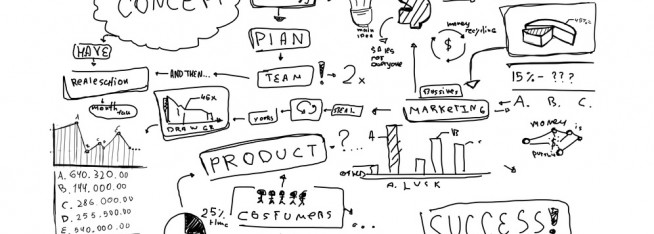For over two years, Deepend has been using a Scrum methodology to deliver work. These projects are characterised by an Iteration 0 kickoff that covers everything about a product, at a top level. From the reason the project is being delivered, to a map or prioritised list of features on post-it’s.
Without fail, every person that walks out of these meetings tells me it was incredibly valuable to have these kind of conversations. We’ve even had this from clients who had noticeably thick documentation before they walked into the meeting!
I’m proposing that it’s the ability to visualise a product or scope as a whole that is what makes these things so valuable. A 60 page document describing every detail of a feature can feel less valuable to a product than a good old-fashioned series of sketches on a whiteboard.
Our bag of tricks:
– Value drivers: What are the things that are going to drive value for the project? When you provide a scale to which is most important and why, create a visual SIZE of each item that actually reflects how much bigger that driver really is.
– Trade-off Value sliders: Rather than using the traditional value sliders that are just a scale, place opposing objectives on either end of the slider, and decide where this project lies on that line.
For example: Does User Experience lead Technology? Or does the Technology lead User Experience?
– Personas / actors: Create a nickname for every actor – allow an easy attachment for that actor or persona for everyone. Start with fables – Hansel, Gretel, Adam, Eve, Jack, Jill…
– Mind-mapping of features: Put all the important “sections” or “processes” on a whiteboard, and then surround them with more detailed or a better breakdown of user stories on post-it notes.
– Prioritise “from 1 to 100” post-its: Forget the idea of High / Medium / Low. Prioritise everything from first to last. It won’t be right the first time you do it, but the very act of doing it makes people see things in a very different way. Immediately you’ll realise dependencies, chunks of related work, and other interesting trends with your stories.
We’re always looking for new ways to keep capitalising on the satisfaction and clarity that comes from being able to really visualise scope.
We’ve found the above provides a great way for teams with disparate knowledge to get up to speed on what a product should be, and what will make it a success.













